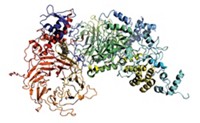Advertisement
Grab your lab coat. Let's get started
Welcome!
Welcome!
Create an account below to get 6 C&EN articles per month, receive newsletters and more - all free.
It seems this is your first time logging in online. Please enter the following information to continue.
As an ACS member you automatically get access to this site. All we need is few more details to create your reading experience.
Not you? Sign in with a different account.
Not you? Sign in with a different account.
ERROR 1
ERROR 1
ERROR 2
ERROR 2
ERROR 2
ERROR 2
ERROR 2
Password and Confirm password must match.
If you have an ACS member number, please enter it here so we can link this account to your membership. (optional)
ERROR 2
ACS values your privacy. By submitting your information, you are gaining access to C&EN and subscribing to our weekly newsletter. We use the information you provide to make your reading experience better, and we will never sell your data to third party members.
Biological Chemistry
Self-catalytic activity found in genomic DNA
April 3, 2006
| A version of this story appeared in
Volume 84, Issue 14
Catalytic activity has beenfound for the first time in a natural DNA sequence. The self-catalytic activity shows "that DNA is not merely the inert information tape for storing hereditary information, as has been thought for half a century, but that it also has the intrinsic capacity to modify itself," says Jacques R. Fresco of Princeton University, who made the discovery with coworkers Olga A. Amosova and Richard Coulter (Proc. Natl. Acad. Sci. USA 2006, 103, 4392). Sidney Altman of Yale University and Thomas R. Cech of Howard Hughes Medical Institute discovered catalytic RNA, work for which they shared the 1989 Nobel Prize in Chemistry. And catalytic activity has been identified in synthetic DNA, such as in DNA oligomers created in in vitro evolution experiments. Now, the Princeton group has discovered self-catalyzed guanine-depurinating activity in short natural DNA sequences as well. These sequences are widely distributed in human and other genomes, suggesting that self-catalyzed depurination of guanine may play a key biological role.




Join the conversation
Contact the reporter
Submit a Letter to the Editor for publication
Engage with us on Twitter